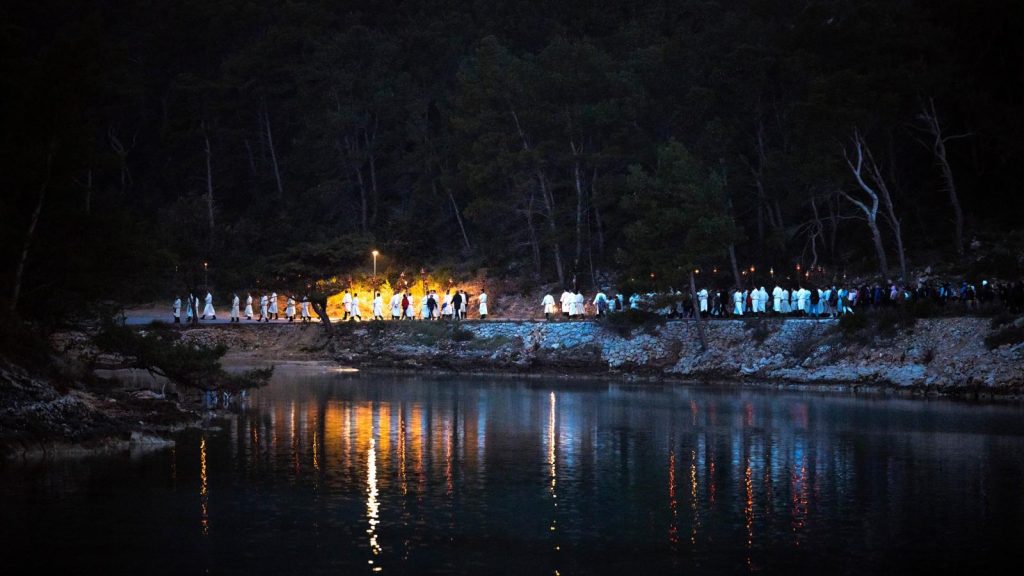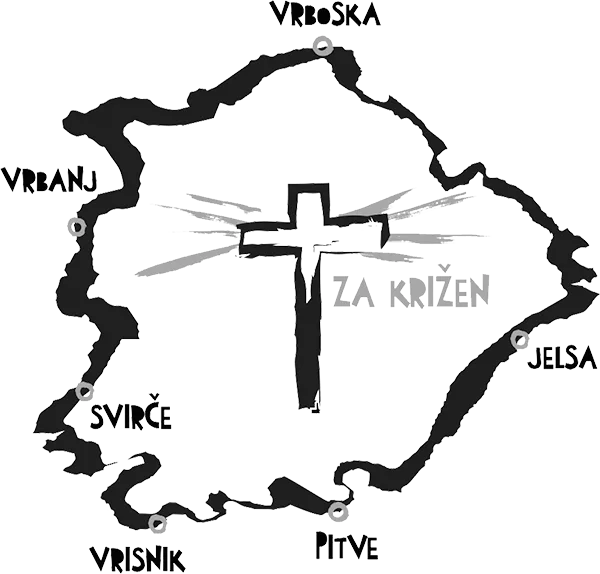Why the ‘Za križen’ processions came into being
1. THE MIRACULOUS EVENT WHICH PRECEDED THE PEOPLE’S PROCESSIONS
Veneration of the cross has a long tradition on Hvar and the ‘Za Križen’ Processions are linked to the Hvar Uprising and the miraculous event which took place back in 1510. The Hvar Uprising was a people’s rebellion led by one Matij Ivanić against the nobility in an attempt to give ordinary people a share in the power of the Hvar Commune. The rebellion spread across the whole island and lasted for four years (1510-1514).
In the 16th century the commoners and the socially and politically privileged nobility were the two main social classes on the island. In some individual cases the differences between the two in terms of property and finance were negligible, but even rich commoners were unable to rise out of their lower social class to enter the ruling council. It was especially galling that the commoners’ assembly had no control over the decisions of the noblemen’s council. The social divide between the two groups was irreconcilable. Another cause for anger was the fact that the Venetian government used to impose its own noblemen as their rulers, which significantly undermined the autonomy of the Dalmatian Communes. So the commoners prepared themselves to fight for a share in the local power structure and decision-making processes.
The leaders of the commoners conspired to put an end to the oppression and humiliations they were being subjected to. Their plan was to kill off some of the Hvar noblemen. To seal their conspiratorial agreement, they knelt before a small wooden crucifix in the house of one Toma Bevilaqua. About three months after they forged their plan, on February 6th 1510, grey clouds came down over the rooftops, rain poured down and a fierce storm battered Hvar. At about 7 pm, there were three earth tremors, which brought down the roof of the church of the church of Our Lady of the Annunciation, which was under construction. About twenty metres from the church in Toma Bevilaqua’s house, his daughter was about to take the washing out of its basket, when she noticed blood trickling down the wall from the little crucifix. In terror she called her mother to see, and the local house-painter was summoned, who confirmed that it was real blood.
On the same evening the crucifix was transferred to Hvar Cathedral. The news of the happening spread rapidly around the island, causing fishermen to leave their boats, farmers to come out of the fields: the whole population, young and old, crowded into the church. During the following days many holy crosses arrived, brought in by a never-ending stream of people from across the whole island. The atmosphere was tense, because the miracle was seen as the portent of a great evil. Hvar Town was gripped by palpable fear that ruin was about to strike.
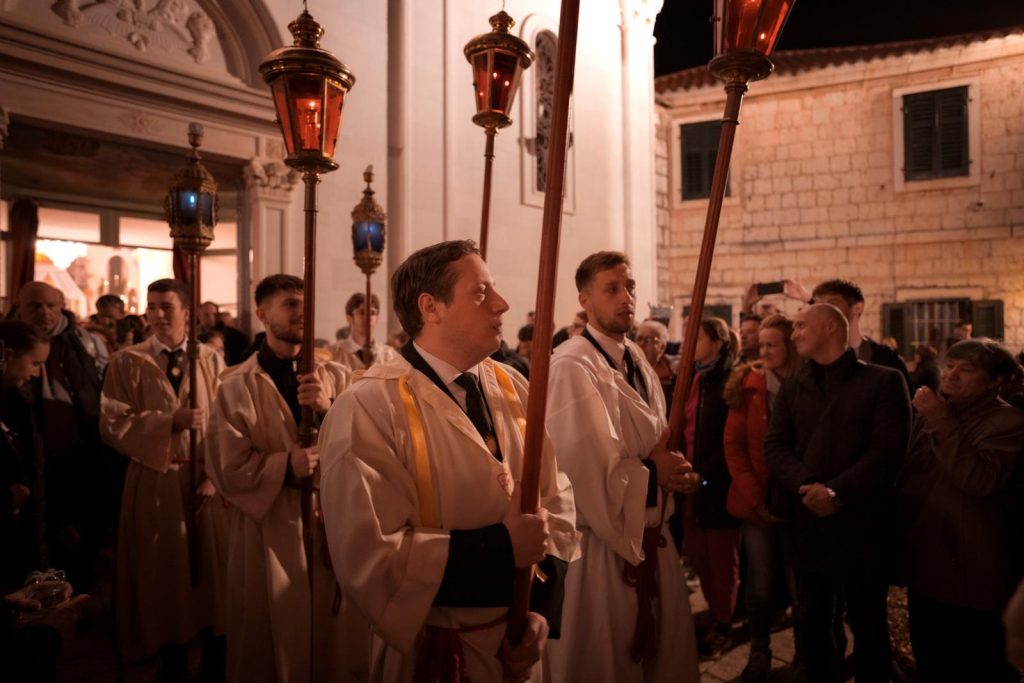
Although the islanders believed that Heaven was angry with those who had committed to the conspiracy in front of the little cross, the plan was not abandoned. The commoners were well organized right across the island, and with the coming of spring the memory of the prior events gradually faded, opening the door to the long-awaited conflict. One can say that the incident with the little cross caused a delay but did not prevent the inevitable rebellion, which broke out in May 1510. The commoners from the central area of the island went into battle under the leadership of Matij Ivanić from Vrbanj. After four years the rebellion was crushed with much bloodshed, leaving the commoners’ struggle for equality as an unfulfilled dream.
Tradition has it that it was in memory of this event that penitential processions began to take place across the island. In times long past, the processions happened before dawn on Good Friday, visiting ‘Jesus’ grave’ in the neighbouring settlement. This is still the case in settlements outside the parishes included in the ‘Za Križen’ all-night Procession, which is said to have been extended into its current form about 200 years ago.
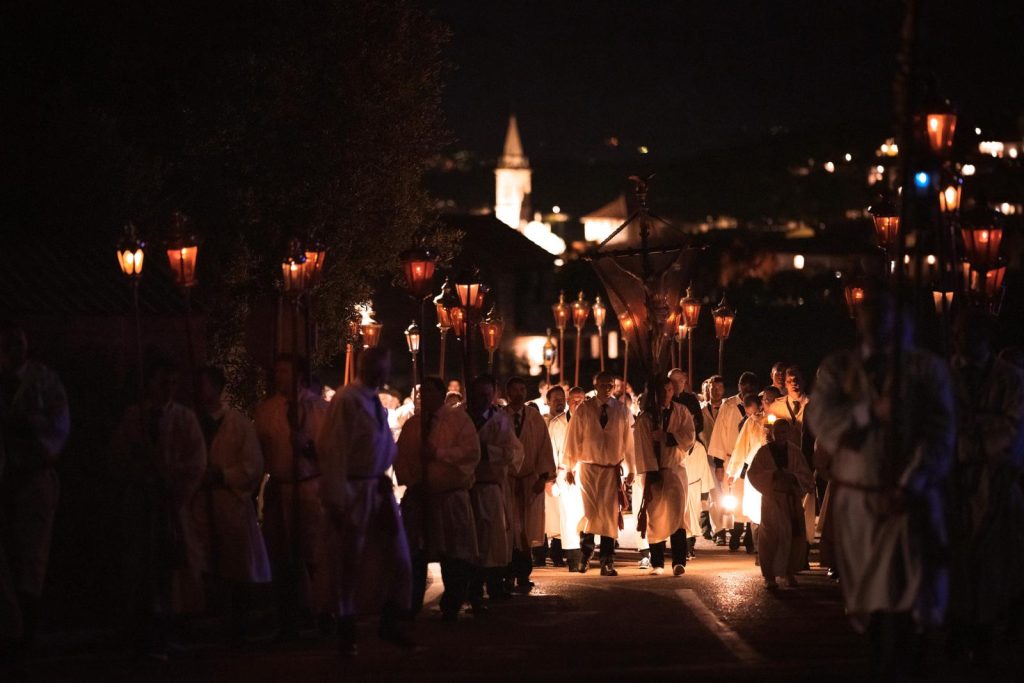
2. RECONCILIATION BETWEEN THE PARISHES
Neighbouring parishes during those troubled times were often in dispute and quarreling with each other. The desire to make peace between the parishes was another factor which may have contributed to the introduction of the processions.
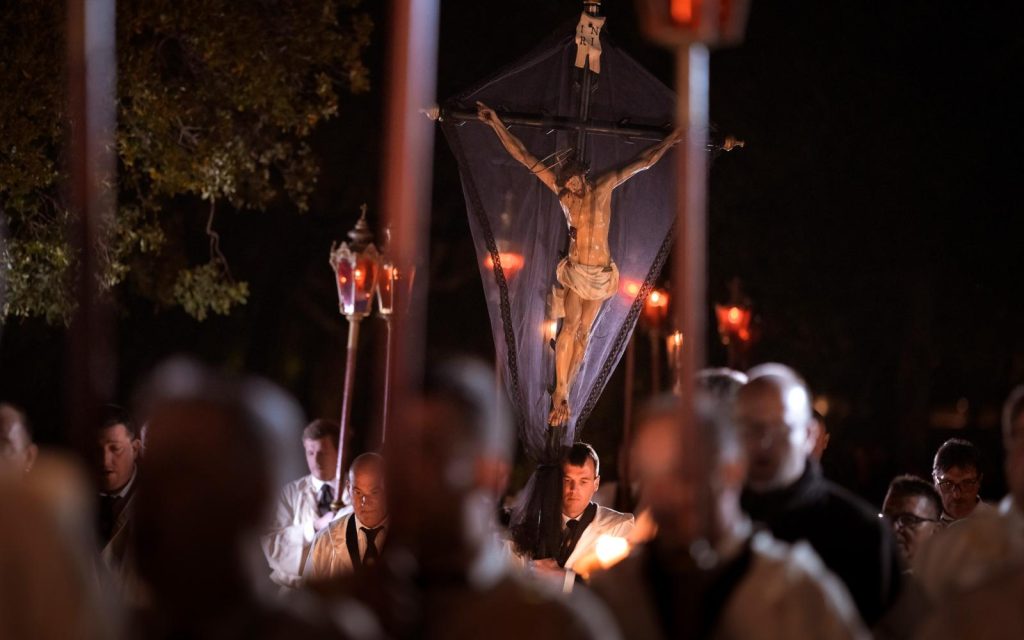
3. VISITING ‘GOD’S GRAVES’
A third theory holds that the ‘Za Križen’ processions came into being as a typical expression of Medieval piety: concentrated reflection on Christ’s suffering and death could be best realised by visiting ‘God’s grave’ (‘Božji greb’), which is the place on the altar displaying Christ’s tomb, first with his body visible, then empty following the miracle of the Resurrection at the end of Holy Week. For the all-night ‘Za Križen’ Procession, the chancel in front of the altar in each of the participating parish churches is lavishly decorated as a mark of veneration for Christ’s grave. The decorations are removed immediately after the Procession ends to make way for the normal Good Friday rituals later in the day.
